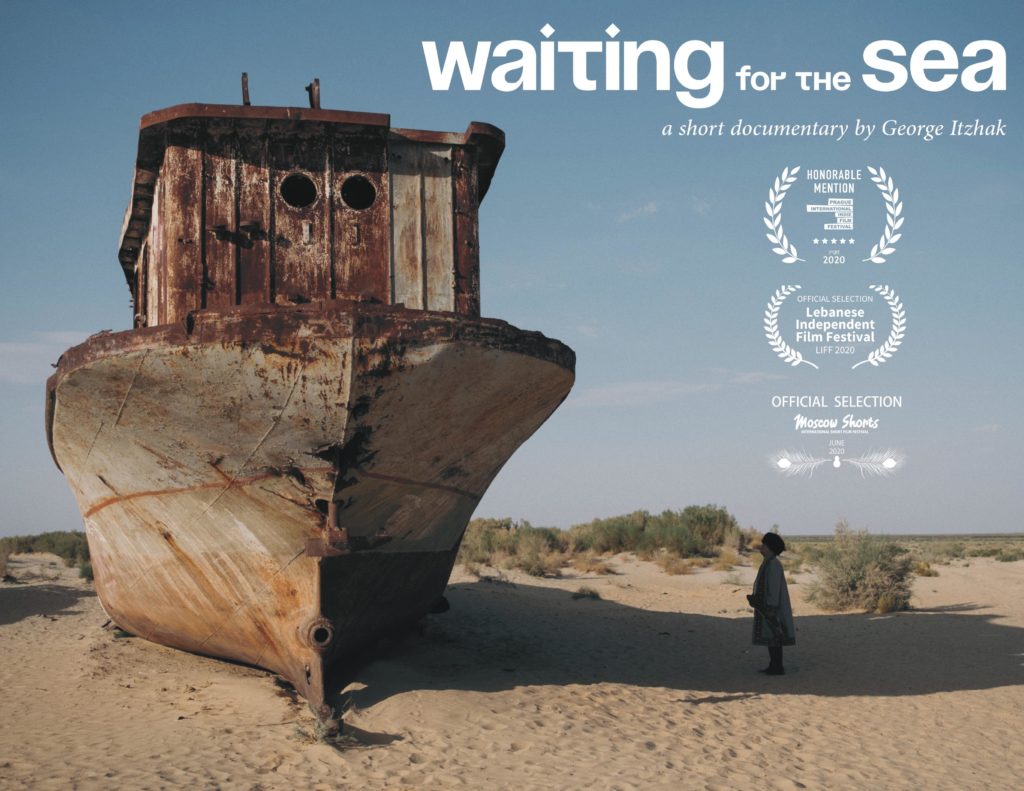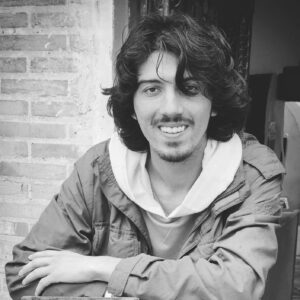George Itzhak’s award-winning short documentary “Waiting for the Sea” connects insights into Uzbekistan electronic music scene and its traditional music with the drying up of the Aral Sea. Novastan spoke with him about the challenges of making the film, the similarities between techno and folk music, and the film’s reception in Central Asia and beyond.
An electronic music festival in the middle of Aralkum desert, over a thousand kilometres away from the capital Tashkent? That’s the idea behind Stihia, which held its first edition in September 2018 in Moynaq, a small town in the autonomous region of Karakalpakstan, in western Uzbekistan. This town is best known for its tragic destiny: once located at the southern shore of the Aral Sea and famous for its fish industry, the town is now dozens of kilometres away from the rapidly receding shorelines of the Aral Sea.
Want more Central Asia in your inbox? Subscribe to our newsletter here.
Director George Itzhak, 28, who was born in Tashkent but grew up and lives in New York City, was fascinated by the idea of the festival, by the emerging electronic music scene in Tashkent and the connections of techno music and traditional Uzbek folk music. In August 2019, he travelled to Uzbekistan for the second edition of Stihia, and to dive into Uzbek culture and the capital’s young electronic music scene.
The result is “Waiting for the Sea”, a documentary representing his personal perspective as an Uzbek who has never lived in Uzbekistan and his search for the connections between ancient tradition and futuristic movement. At the same time, it breaks away from the stereotypes and clichés often used when presenting Uzbekistan, Karakalpakstan and the region of the Aral Sea.
Waiting for the Sea from George Itzhak on Vimeo.
Novastan: You were born in Uzbekistan but grew up in New York City. What made you want to return to Uzbekistan to make a documentary?
George Itzhak: I was born in Tashkent, but when I was about a year and a half old, my entire family left. My family background is that we’re Bukharan Jews, so we’re part of the Jewish minority in Uzbekistan. The Bukharan Jews started to leave Uzbekistan in the 1980s, first slowly, and then much faster after the collapse of the Soviet Union, as they were concerned about a possible religious backlash after the independence of Uzbekistan. America and Israel opened the doors for us, so pretty much all of us left by the mid-nineties. Many of them settled in New York – there are about 50.000 to 60.000 Bukharan Jews in New York City. So, we have a very big diaspora community there.
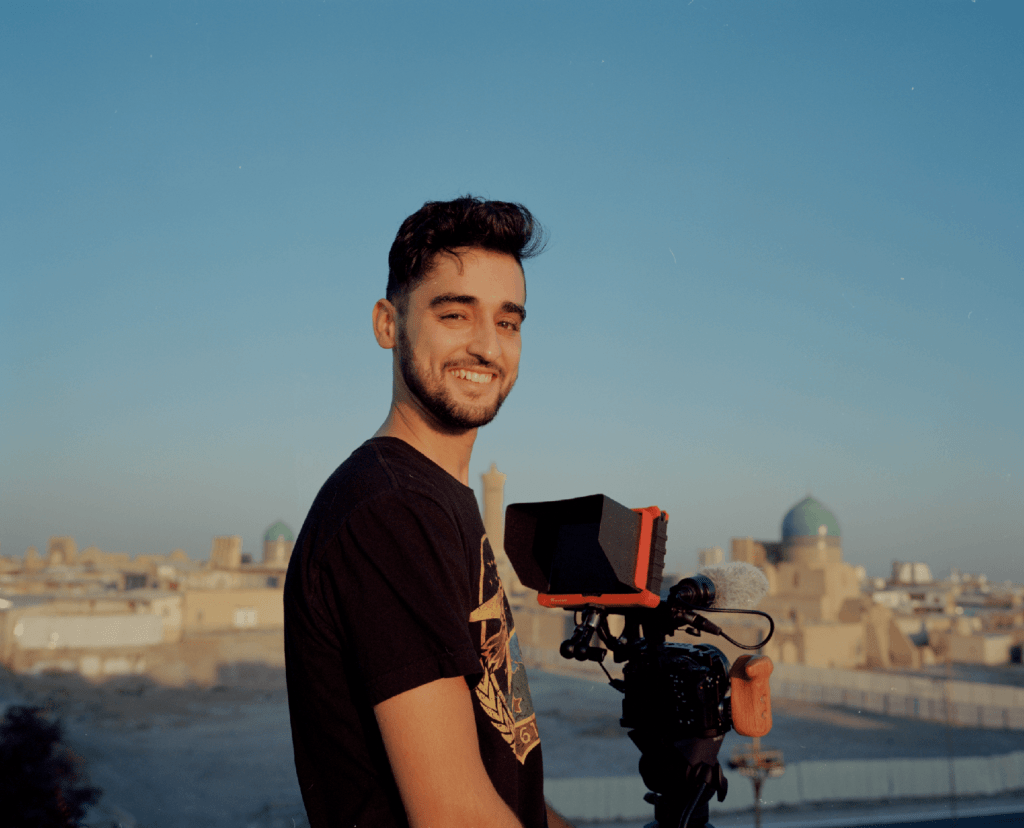
I grew up in New York City speaking Russian at home, observing all the traditions, hearing about Uzbekistan from my grandparents, but we never went there – it just never came up. I travelled to Russia a few times, but I never made it to Central Asia. As I got older, I got married, I had a child, and suddenly something clicked in me, that I wanted to go back before starting this new part of my life. Then I found the story of Stihia and the young electronic music scene in Uzbekistan, which was fascinating to me, and I saw a really good opportunity there.
How did you hear about Stihia?
It all started with one image that someone on my Facebook shared: It was a poster of Stihia, and it was the image of a traditional Karakalpak woman in traditional clothing. But it was very stylized, in an electronic music poster kind of way. It was almost like a magical picture: it merged the traditional culture and the way I had been used to seeing Uzbekistan with this very young, futuristic aesthetic. The combination of those two really made an impression on me, I clicked on it and kept diving into this topic and stumbled about all these stories of electronic music in Uzbekistan and Stihia, which had taken place last year.
So, I discovered Stihia in the preparations of the second year of the festival. I totally missed the first year! But from then on, I was caught, and I started making calls, got in touch with the festival founders, formulating what this film project could be. I called my co-producer, Neha Hirve, with whom I had studied in New York, and told her: “Look, I have this crazy idea, not a lot of money, but I can promise you that it’ll be an adventure.“ And she was on board right away. We just started sharing images, sharing and finding references in the world of cinema about Central Asia. It’s a documentary, but I didn’t want it to feel like a reportage. I had seen some stories on Stihia already, but I wanted it to be something different. I wanted to be immersed and to show my own experience.
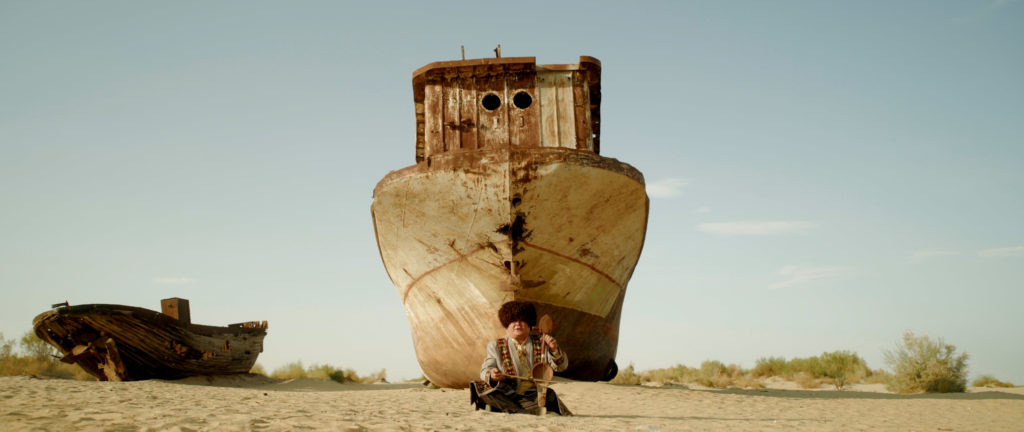
So, what followed were about three to four months of pre-production, phone calls, interviews with the interview partners shown in the film etc. I was really immersing myself in the visual world of Uzbekistan, checking out photographers from Uzbekistan – that’s how I discovered Novastan also. My main goal before going there was to try to understand the visual language of Uzbekistan. That was the key. I think the view on Uzbekistan from the West and foreigners is very orientalist. It’s all about women dancing, making Lepyoshka in the oven etc. It almost feels like looking at animals in the zoo sometimes. I feel like I have a personal responsibility here. I am from there, but I’m not really from there. I have a foot in both worlds, and I knew I couldn’t just do a basic, superficial job of this.
How did you experience the electronic music scene in Uzbekistan and especially in Tashkent?
There are two parts of the story: Stihia and Moynaq on the one hand, and then there was so much happening in Tashkent. My goal was to join those two straits together. I had never thought about Uzbekistan in the context of electronic music. I think that’s why the images I found online inspired me so much. I think it partly revealed my own ignorance: growing up in New York, even though I’m from Uzbekistan, everything I knew about this city and this place, I knew it through the lens of my grandparents. So, I had this kind of archaic, old view – a view stuck in the past. And when I was in that basement bar in Tashkent, it was like I was thrown into the future. It actually felt very close to New York. I think that’s simply global culture. People there had t-shirts that said “Brooklyn” on them.
I could see that the walls that had once existed, in my grandparents‘ generation, were no longer there. I was really surprised to discover how diverse the city is. It’s a very multicultural place. I think people in Tashkent have always been cosmopolitan, but you can’t deny that there were boundaries between different ethnicities, between Uzbek Jews and Russians etc., there were some walls there. But being there and being among this group of young people, the generation coming up now, really showed me that a lot of the old boundaries that existed before, in my parents’ and grandparents’ time, were gone.
Do you have any references that inspired you in your idea of making “Waiting for the Sea”?
I have one specific reference that was very essential when formulating this concept: it’s one French film maker of Roma origin, Tony Gatlif. His work is so influenced by folk music, and I was trying to understand how to cinematically depict music, in a way that had storytelling in mind, a way that was emotionally driven. I discovered his work and he did a film called “Latcho Drom”. It’s a story about the Roma people, told exclusively through folk music. It’s technically a documentary, but it’s also treated like a fiction film. He’s making a blend of those two formats through folk music. I guess I saw a potential there to apply that to Uzbekistan.
In your documentary you explore the connection between traditional folk music and electronic music. What kind of a connection do you see between the two?
This was actually the main concept I wanted to explore. The way I felt listening to Uzbek, Karakalpak, Bukharan folk music was the same way I felt when listening to electronic music. I think they’re so similar. When you put them in a dialogue together, they create this perfect lens through which you can look at Uzbekistan, its past and its future. There is a great quote by Jeff Mills, a famous American DJ, that came up during my interview with one of the festival founders: “Techno music wasn’t designed to be dance music, it was designed to be a futurist statement.” So you have these two forces: a force of the past about preserving heritage, about honouring what came before you. And you have this other force, on the other side, looking into the future, creating something new. And I really wanted to create a conversation between these two. And frankly, it just happened naturally. It just happened in Karakalpakistan, I didn’t have to force it even.

I also think the aesthetic of Stihia and all electronic festivals is very shamanic: you have the DJ in the centre, on a stage, he’s creating this mixture of sounds and has these circles of dancers spiralling around him, reaching an extraordinary level of ecstasy. It’s very ancient in its presentation. Electronic music and ancient folk music, they both sort of speak to God. I know it sounds crazy, but the electronic music artists I talked to, talked about Stihia being their way of reaching out to the god of the Aral, to call for the rain. They themselves called it a shamanic act. And if you look at the history of folk music, it has that same root. There is a connection to something in another world.
In the documentary, you also show that not only young people from all over the world, from Central Asia, India and Russia joined the festival, but also locals from Moynaq, elderly people and children. How would you describe the atmosphere at the festival?
I think it’s something that happened unexpectedly. The festival organisers told me that they weren’t sure how the locals would react to the festival. I think you can’t underestimate how far and remote Moynaq is. If you consider Uzbekistan as being isolated, think about how isolated Moynaq is. Just to get there, you have to fly to Nukus and even from Nukus, which is connected to Tashkent, you have to drive three or four hours on terrible desert roads just to get to Moynaq. It’s a very remote place. In many cases, for the first time Stihia was held, many of these locals never heard this kind of music. It must have been revolutionary for them. And I think you can praise Stihia for this and the fact that they’re very inclusive. They didn’t try to create any walls. The only regulations there were came from the officials, from the police. I saw a lot of great moments of interaction there. For example, there was one Australian couple there, teaching these young Karakalpak kids how to dance. That was a beautiful moment. The film makes this point that music like this is universal. It’s not about language. It’s just about feeling and this energy that dancing can create.
Do you feel Moynaq changed because of the festival?
On a physical level, it is changing: there’s a lot of construction happening and a lot of locals I’ve talked to kept talking about the investment in construction and building housing, new stores, new roads. You can totally see that the government is trying to make Moynaq more of a destination right now. But more importantly, there’s a spiritual change: I talked to this one young girl who lived there, and she was so excited about all these people being there and this amazing atmosphere. I think it showed people who live there that they matter in this country. They deserve attention and they’re getting it now.
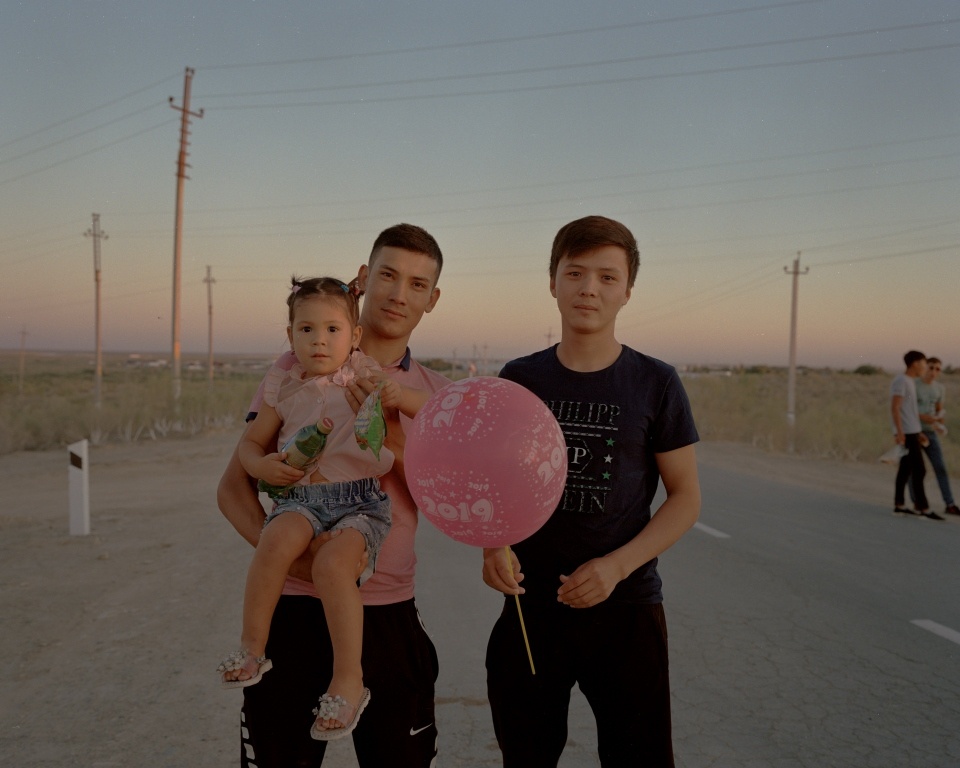
Suddenly, there are people from all over the world coming to their place, and it’s not just about the tragedy of the Aral Sea anymore. Whenever people came to this place, it was all about how bad this place is. Right now, there’s a positive reason to be there. It changes so much to have a positive energy, when people are talking about this place and people come there with the intention of having a good time and are not firstly talking about health issues and economic difficulties and tragedy and ecological disaster. There’s a change there that happens.
Do you think an event like Stihia can have an impact on the way people perceive or deal with the drying up of the Aral Sea?
It’s hard to talk about direct impacts. The film wasn’t about the ecological tragedy of the Aral Sea. So many documentaries talk about that already. This festival is more of a statement to the world, it’s more about creating a cluster of energy about this place that might lead to other things. I kept thinking about this understanding of the god of the sea. Whether they believe in it or not I don’t know, but there’s this phrase getting thrown around: “Let’s pray for rain!”, “Let’s pray to the god of the Aral!”, and I really wanted to make this a big thing on the film. This festival was basically a semi-religious act and made this big statement. I’m still processing everything I’ve seen there, but to me it’s a mixture of a shamanic act, a religious act and an act of pure, youthful punk energy.
People might criticise that your documentary shows an idealistic view on Uzbekistan. What would you oppose to this kind of critique?
It really does show an idealistic view on Uzbekistan. That’s probably because I have this very nostalgic view myself. That’s for example why I added this Soviet film from the 1980s about the capital. It’s extremely idealized. It’s all about everyone being together and this beautiful, sunny place to live. And even with things like colour, I gave the Tashkent scene a very golden, nostalgic tone – because that’s how I experienced it. Even with Moynaq: we didn’t want to reinforce the usual picture of it as a very dusty, dead place. So, in the colour corrections, we decided to make the colours look more saturated. We used this exaggerated green, for example. We didn’t want it to seem dead.
So of course, it’s subjective. I really put my perspective in there. What I noticed from a lot of local or native filmmakers, is that they have another perspective, they face many challenges. But I don’t, and I can’t pretend that I do. So, this film is very much the perspective of an Uzbekistan native who has never lived there. I can’t pretend to be something else. When I edited the film, I often got advice like, you should investigate this aspect and that aspect. I could also have gotten into all the other aspects of Moynaq, the dryness, the sickness of the people there etc., but that would have been another film.
This year’s edition of the festival has been postponed to next year – are you still willing to follow up on Stihia and the electronic music scene in Uzbekistan in the future?
What I am interested in is going back. Whether I’ll be interested in electronic music, I can’t say. But I think there’re so many more stories that I could dive into there and I’m happy that the film is getting attention in the country itself – that has been great so far. So, I feel like I get a lot of trust from people in Uzbekistan, so I can go back and make more.
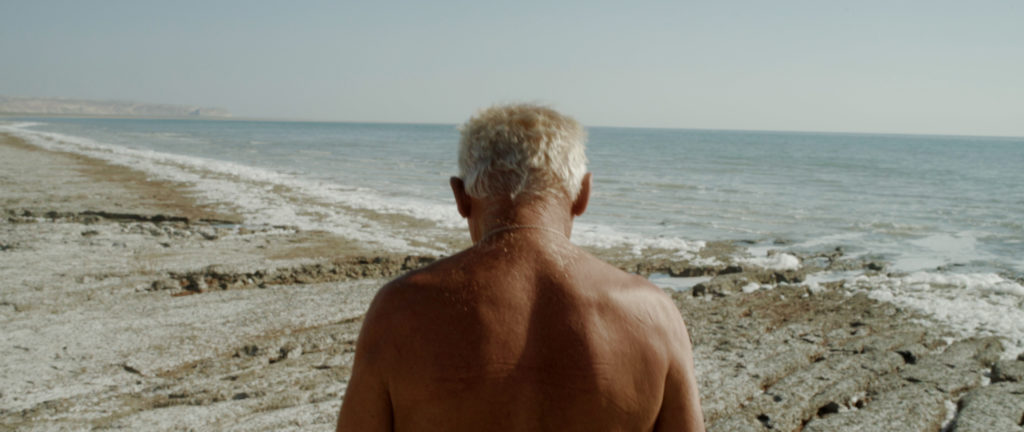
There’s a lot I want to explore I think, and music is definitely going to be a part of my work, because it inspires me so much. I also think I want to go down this folk music path a bit more and dig deeper in it. I think the presence of folk music in Uzbekistan is so relevant and I think there’s a lot to explore there. In general, I am looking forward to working on more documentary projects – but also on fiction. I’d love to get more into fiction film making and get to know the local fictional film industry – there are some great artists from Uzbekistan today, like Saodat Ismailova.
You mentioned that people in Uzbekistan appreciate your work – did you get a chance to screen it there?
We haven’t had a proper screening, partly because of coronavirus. But I’ve been sending it around and I can track through the link I send people where the link is opened. And clearly people in the country are sharing it among each other because I’m getting so many views in Uzbekistan. I sent it to, like, 20 people in Uzbekistan, but it has close to a thousand views in the country, and that’s great! I think it’s probably because someone is finally making a documentary that is not focussing on the negative aspects or on ancient history only. I think the film also makes their culture experiential in other parts of the worlds: when your experience is put into a film that can be seen around the world, it’s making your experience real. I think that’s very powerful.
Your film received the “Best documentary” award at the Moscow Shorts International Film Festival and was awarded best documentary and best cinematography at Long Story Shorts International Film Festival. How does this reward feel?
I didn’t expect any of this – I think as a filmmaker you really don’t want to put any expectations on future success. My only expectation was to make something I could show and be proud of. I am hoping for more, to be able to show it to a broader audience. I’m hoping to show it in New York as soon as I can. I want to take the film to contemporary art spaces, to galleries and to more festivals, as soon as gatherings can happen again without fear. Many of the festivals that were supposed to happen this spring will happen next spring only. I really want to show the film in the UK, in Germany, in Berlin. I want to show the film where there is a big community of creative people and filmmakers, and I want to open this window to Central Asia.
Do you have any plans for screenings in Uzbekistan or Central Asia?
I had planned to show the movie in a festival in Kazakhstan, where the film industry is more developed than in Uzbekistan. But I clearly want to focus on organising something in Uzbekistan. I think that’s super important. But I want to make sure that not just the young people that go to electronic music parties are there, I want to have a broader audience. I think I’ll be working with the festival organisers and organise something. And hopefully at the next Stihia, they’ll be able to screen the film as well.
Interview by Annkatrin Müller
Novastan writer
 Finding links between electronic and folk music in “Waiting for the Sea”
Finding links between electronic and folk music in “Waiting for the Sea” 
